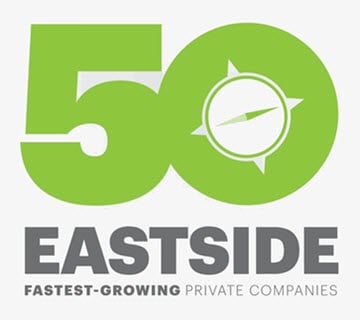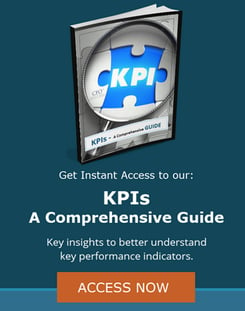 For-profit companies understand the importance of cash flow projections because they are inextricably tied to their goal of generating ongoing revenue. Nonprofits, on the other hand, are not typically as “cash flow savvy.” Some only do cash flow projections when required as a grant application stipulation, while others do not do them at all. And of the organizations doing cash flow forecasts regularly, many do not truly understand what they should be getting out of the process.
For-profit companies understand the importance of cash flow projections because they are inextricably tied to their goal of generating ongoing revenue. Nonprofits, on the other hand, are not typically as “cash flow savvy.” Some only do cash flow projections when required as a grant application stipulation, while others do not do them at all. And of the organizations doing cash flow forecasts regularly, many do not truly understand what they should be getting out of the process.
However, cash flow projections for nonprofits are just as important as cash flow projections in the corporate world, maybe even more so! Why? Nonprofit organizations are less likely to have a steady stream of income than their for-profit counterparts. Without a predictable income each month, many nonprofits bounce back and forth between deficits and surpluses, making the day-to-day management of the organization as well as strategic planning more difficult.
Cash flow projections provide the key information needed to spend wisely during times of deficits as well as surpluses. The result is a stronger organization that is better able to serve its community and further its mission.
Let’s learn more about why cash flow projections are necessary, how to do them, and what they are telling you:
The Importance of Forecasting
While nonprofits do not exist for the purpose of generating money, they certainly need it to operate. Effective financial management ensures that they will allocate funds correctly to fund their programs and initiatives, be good stewards of their resources, and comply with any applicable funding guidelines. Cash flow projections are one of the most important pieces of that puzzle. Knowing how much cash you have now and will have in the future enables better decision-making to serve your audience.
Cash flow forecasts allow nonprofits to ensure that they are financially solvent, which is critical in keeping them up and running. But cash flow projections do not simply help nonprofits keep the lights on. They also equip them to:
- Gain Insight into Fundraising and Spending Behaviors
- Budget Better
- Hire More Effectively
- Track Performance
- Identify Available Opportunities
- Overcome Challenges
- Manage Risk
- Be Quicker to Respond to External Changes
The result is a stronger organization with a greater capability of carrying out its mission!
Anticipated Expenses
To generate a cash flow forecast you will need to account for both anticipated expenses and anticipated income. Expenses are typically easier to predict and include things like payroll (salary and benefits), building rent, and administrative costs. But aside from these operating expenses, there are also programming expenses to take into account. These can include things like community outreach, fundraising events, and honorarium payments. You will need anticipate what the organization’s expenses are over the next 12 months to build reasonable cash flow projections. This is where cash flow projections and planning have a symbiotic relationship because they build off of and benefit one another.
Anticipated Income
In addition to anticipated costs, you will need to account for anticipated income. This is often a far trickier category to do correctly because funding can fluctuate significantly throughout any given year. Anticipated income should include foundation and government grants, individual and corporate donations, and interest from endowments. For nonprofit organizations that sell their professional services or have a retail component as well, the sales of these offerings will also count towards anticipated income.
Breaking it Down
Amid these various expenses and income sources there are different categories to consider. Typically, a nonprofit cash flow statement will be broken down into three categories:
- Cash flows from operating expenses
- Cash flows from investing activities
- Cash flows from financing activities
While not every organization will necessarily have income and expenses that fall into each of these categories, you should expect to see that this is how a cash flow forecast will be organized when there are inflows and outflows in these different boxes.
Scenario Planning
The organizations that are the savviest planners will not only do one cash flow projection but will also engage in what is called “scenario planning.” Scenario planning involves creating multiple cash flow forecasts based on different outcomes.
For instance, an organization applying for a government grant as well as waiting on a large private donation may use scenario planning to estimate their cash flow if they do not receive either, if they receive the grant but not the donation, receive the donation but not the grant, and if they receive both. This a simple example, but it illustrates how a nonprofit can use scenario planning to help better inform their cash management to account for a variety of outcomes.
Analyzing the Results
Once your cash flow projections are done, you are not quite finished. Now it is time to answer the question, “What is your cash flow forecast telling you?”
Analyze your cash flow projections to draw conclusions about what to do next. Use this information to guide your financial decision-making and future planning efforts. If you need help in this area, bring in strong financial leadership to help discern what the numbers are telling you, which metrics to focus most closely on, and what to do next. A savvy nonprofit financial leader will have the foresight needed to help you budget for upcoming expenses, make wise investment decisions, achieve greater liquidity, and weather deficits when they occur.
When you are looking for nonprofit financial services, look no further! We offer nonprofit CFO services as well as nonprofit Controller services to organizations that need interim help, are looking to make a change in leadership, or are undergoing a strategic transformation. Find out how our nonprofit consulting team can come alongside your organization to help you achieve greatness!





